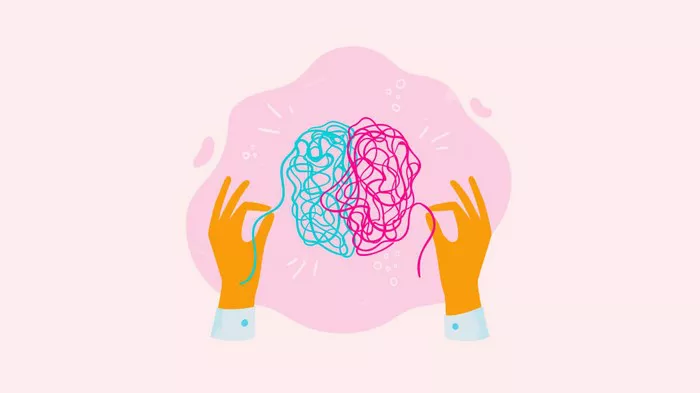Sleep is a critical component of healthy development, influencing not only physical growth but also emotional and cognitive stability. However, sleep disorders are alarmingly common, with estimates suggesting that between 20% and 30% of young children suffer from sleep-related issues. These conditions can have long-lasting effects on a child’s behavior and well-being, and understanding how to address them is crucial for both parents and caregivers.
Dr. Prashanth S. Urs, Senior Consultant Neonatologist and Pediatrician at Apollo Hospitals, Bannerghatta, Bengaluru, discussed the impact of sleep disorders on children and the importance of early intervention.
Common Sleep Disorders in Children
Parasomnias
Parasomnias, including sleepwalking, sleep talking, and night terrors, are relatively common in children. These disorders occur when certain areas of the brain remain active during sleep, leading to behaviors that can be alarming but are generally harmless. While factors such as stress, genetics, and sleep deprivation may trigger these episodes, they typically do not require medical treatment. Ensuring a safe sleep environment and reducing stress can help mitigate these behaviors.
Obstructive Sleep Apnea (OSA)
OSA occurs when the muscles in the upper airway relax too much during sleep, temporarily blocking airflow. Children with enlarged tonsils or adenoids, or those who are overweight, are particularly vulnerable. If untreated, OSA can lead to issues such as poor concentration, behavioral problems, and impaired academic performance. Treatment options include lifestyle changes, surgery, or the use of devices like Continuous Positive Airway Pressure (CPAP) machines to maintain airway openness.
Narcolepsy
Narcolepsy is a neurological disorder that impairs the brain’s ability to regulate the sleep-wake cycle. Children with narcolepsy may experience excessive daytime sleepiness, despite feeling rested upon waking. This condition can significantly impact a child’s ability to participate in daily activities. In severe cases, individuals may experience sudden, uncontrollable sleep attacks. Medications are typically prescribed to manage narcolepsy.
Restless Legs Syndrome (RLS)
RLS causes an irresistible urge to move the legs, particularly when the child is resting in the evening. Described as a tingling, burning, or itching sensation, RLS makes it difficult for children to fall asleep. Though regular physical activity and reducing caffeine intake can help alleviate symptoms, more severe cases may require medication. RLS is believed to be linked to low dopamine levels or iron deficiencies, both of which contribute to leg movement control.
Insomnia
Characterized by difficulty falling or staying asleep, insomnia in children can be triggered by stress, anxiety, or irregular sleep routines. Younger children may struggle with sleep disruptions if they depend on sleeping with a parent, while older children and teens may have inconsistent sleep patterns due to busy schedules. Developing a consistent bedtime routine and limiting screen time before bed can improve sleep quality. For more severe cases, Cognitive Behavioral Therapy for Insomnia (CBT-I), a non-medication approach, has proven effective.
Circadian Rhythm Disorders
Delays in the natural sleep-wake cycle are common in teenagers and are often referred to as delayed sleep phase syndrome. This condition can disrupt daily routines, affecting school performance and social interactions. Treatment options include light therapy, adjustments to sleep habits, and occasionally melatonin supplements.
Periodic Limb Movement Disorder (PLMD)
PLMD involves involuntary leg movements during sleep that can disrupt rest and result in daytime fatigue. While these movements may be subtle, they often interfere with deeper stages of sleep, leading to tiredness during the day. If the movements are significant enough to affect daytime functioning, medical treatment may be necessary.
Rhythmic Movement Disorder
Some children engage in repetitive movements such as rocking or head banging while falling asleep. While these behaviors are typically harmless, they can pose a risk if they result in injury or significantly disrupt sleep.
Diagnosing and Treating Sleep Disorders
Diagnosis of sleep disorders often begins with a physical exam and a thorough review of the child’s sleep patterns. Parents may be asked to keep a sleep diary to monitor habits and identify any issues. In some cases, further testing, such as a polysomnogram (sleep study), may be required. This overnight test tracks brain waves, heart rate, muscle activity, and breathing to detect underlying sleep problems like sleep apnea.
For children with sleep disorders, a multidisciplinary approach is essential. At specialized sleep centers, teams of professionals from neurology, pulmonology, otolaryngology (ENT), and behavioral medicine collaborate to create individualized treatment plans tailored to each child’s needs.
The Role of Parents in Promoting Healthy Sleep
Parents play a pivotal role in fostering healthy sleep habits in children. Establishing a consistent bedtime, reducing screen time, and creating a quiet, relaxing sleep environment are key steps in promoting good sleep hygiene. In some cases, behavioral interventions such as relaxation exercises or establishing a structured bedtime schedule may be necessary to improve sleep quality.
By taking a proactive approach, parents can significantly improve their child’s sleep, ultimately enhancing their mental and physical health.
Related Topics






























